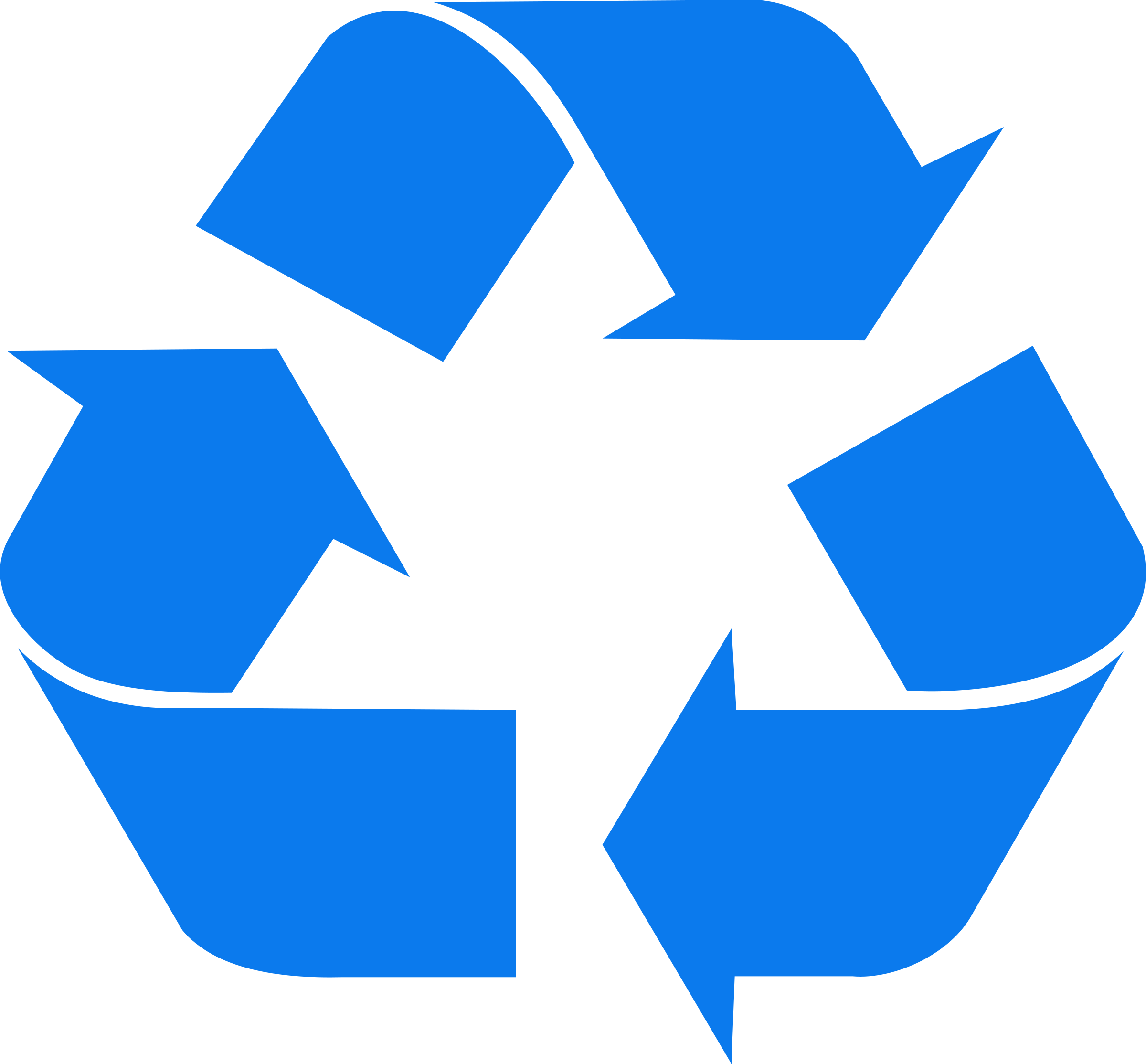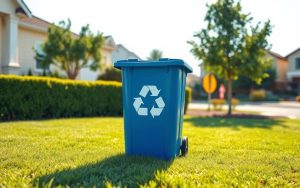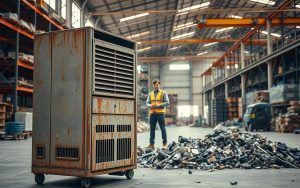Many people wonder if textiles belong in curbside recycling bins. This common misconception often leads to improper disposal of clothing and other fabric items. While recycling is a great way to reduce waste, not all materials are suitable for standard bins.
Textile waste has a significant impact on the environment. Over 300,000 tons of fabric end up in landfills annually, contributing to carbon emissions. Proper disposal methods are essential to minimize this damage.
Instead of tossing old garments, consider ethical alternatives. Donation, resale, and brand take-back programs are excellent options. Companies like H&M and Patagonia offer initiatives to help consumers recycle responsibly.
This guide explores actionable solutions to reduce textile waste. Learn how to make a positive impact on the planet by adopting sustainable practices.
Can Clothes Go in the Recycle Bin? Understanding the Basics
Understanding where fabrics fit in the recycling process is essential. While paper, plastics, metals, and glass are staples in curbside bins, textiles like clothing require a different approach. Municipal facilities are not equipped to handle fabric items, as they can jam sorting machinery.
Standard curbside recycling protocols focus on single-material items. Paper, plastics, and metals are easily sorted and processed. However, textiles often contain mixed materials, such as polyester-cotton blends, which complicate the process. These garments need specialized treatment that most local programs cannot provide.
According to WRAP, 49% of UK textiles end up in general waste. This highlights the need for better disposal methods. Industrial recycling applications often use “rag quality” fabrics for insulation or cleaning products. These solutions keep clothing out of landfills and reduce environmental impact.
| Material | Curbside Recycling | Specialized Processing |
|---|---|---|
| Paper | Yes | No |
| Plastics | Yes | No |
| Metals | Yes | No |
| Textiles | No | Yes |
Why Clothes Don’t Belong in Your Curbside Recycling Bin
Textiles pose unique challenges for standard recycling programs, making them unsuitable for curbside bins. While paper, plastics, and metals are easily processed, fabrics often contain mixed materials that complicate sorting. This mismatch can lead to significant issues at recycling facilities.
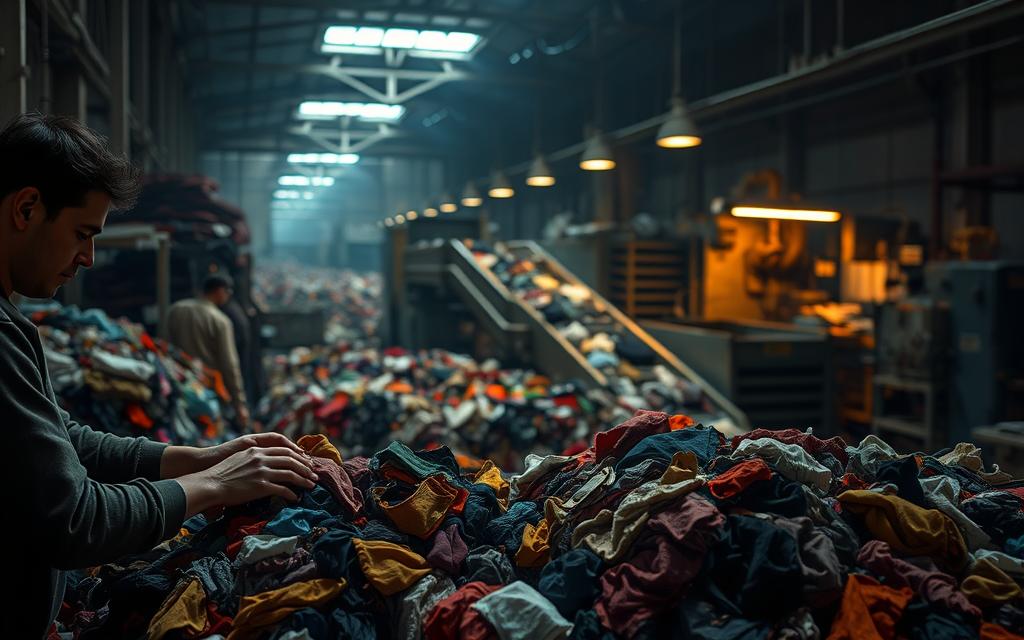
How Recycling Facilities Handle Different Materials
Recycling centers are designed to process single-material items efficiently. Paper, plastics, and metals are sorted using specialized equipment. However, textiles like polyester-cotton blends or garments with zippers can jam machinery. This not only disrupts operations but also increases repair costs.
For example, dyes from fabrics can contaminate paper pulp, reducing its quality. Similarly, metal components like zippers can cause holes in sorting belts. These issues highlight why textiles require specialized recycling methods.
The Risks of Putting Clothes in the Recycle Bin
Improper disposal of textiles has far-reaching consequences. When fabrics end up in curbside bins, they often contaminate other recyclables. This “wishcycling” practice leads to higher landfill rates. According to WRAP, 49% of UK textiles are discarded in general waste, contributing to environmental harm.
Proper textile recycling, on the other hand, can divert over 95% of materials from landfills. Programs like Nike’s shoe recycling initiative transform old footwear into playground surfaces, showcasing the potential of responsible disposal.
By avoiding curbside bins for textiles, you can help reduce contamination and support sustainable recycling efforts. Small changes in disposal habits can make a big difference for the planet.
Alternative Ways to Recycle or Reuse Clothing
Finding sustainable ways to handle old garments is easier than you think. Instead of tossing them out, consider ethical options that benefit both the environment and your community. From donating to reselling, there are numerous ways to give your textiles a second life.
Donating to Charity Stores and Shelters
Donating your clothing to charity stores or shelters is a simple yet impactful choice. Organizations like the British Heart Foundation and Salvation Army accept gently used items. Ensure your donations are in good condition and suitable for reuse. For shelters, items should be washable at 70°C to meet hygiene standards.
Using Clothing Banks for Textile Recycling
Clothing banks are another excellent option for recycling textiles. Many supermarkets, such as Tesco and Sainsbury’s, have collection points in their parking lots. These banks ensure that even worn-out items are processed responsibly, often turning them into insulation or cleaning materials.
Selling or Swapping Gently Used Clothing
If your clothing is in great condition, consider selling or swapping it. Platforms like Vinted and Depop make it easy to connect with buyers. For a hands-off approach, consignment stores like thredUP offer up to 80% commission. Swapping with friends or at local events is also a fun, eco-friendly option.
By exploring these alternatives, you can reduce waste and support sustainable practices. For more tips on managing your textiles, check out this comprehensive guide.
Creative Upcycling: Giving Old Clothes a New Life
Upcycling old garments is a creative way to reduce waste and breathe new life into unused items. Instead of discarding them, transform your textiles into something practical or artistic. This approach not only minimizes environmental impact but also adds value to your daily life.

Turning Old Clothes into Cleaning Rags or Craft Projects
Old garments can easily become cleaning rags or materials for craft projects. Cut them into squares for dusting or polishing surfaces. For a more creative touch, turn a T-shirt into a no-sew tote bag in just 10 minutes. This simple project requires no special skills and gives your clothing a second purpose.
Shredded textiles also have industrial uses. They are often repurposed into moving blankets, HVAC filters, or even insulation materials. Companies like TerraCycle offer a Zero Waste Box for non-reusable fabrics, starting at $119. This ensures even worn-out items are processed responsibly.
Repurposing Textiles for Home Use
Transform old garments into useful items for your home. For example, turn a worn-out sweater into a cozy pet bed or use fabric scraps to stuff a cushion. Denim can be repurposed into durable placemats or patchwork quilts. Etsy sellers have turned upcycled denim crafts into a thriving business, generating over $50K annually.
When repurposing stained items, follow safety tips. Use bleach solutions or fabric sealants to ensure cleanliness. This approach keeps your home safe while extending the life of your textiles.
Brand Take-Back Programs and Retailer Recycling Initiatives
Brands and retailers are stepping up to address textile waste through innovative recycling programs. These initiatives make it easier for consumers to dispose of unwanted items responsibly. From trade-in credits to mail-in options, companies are leading the charge in sustainable fashion.
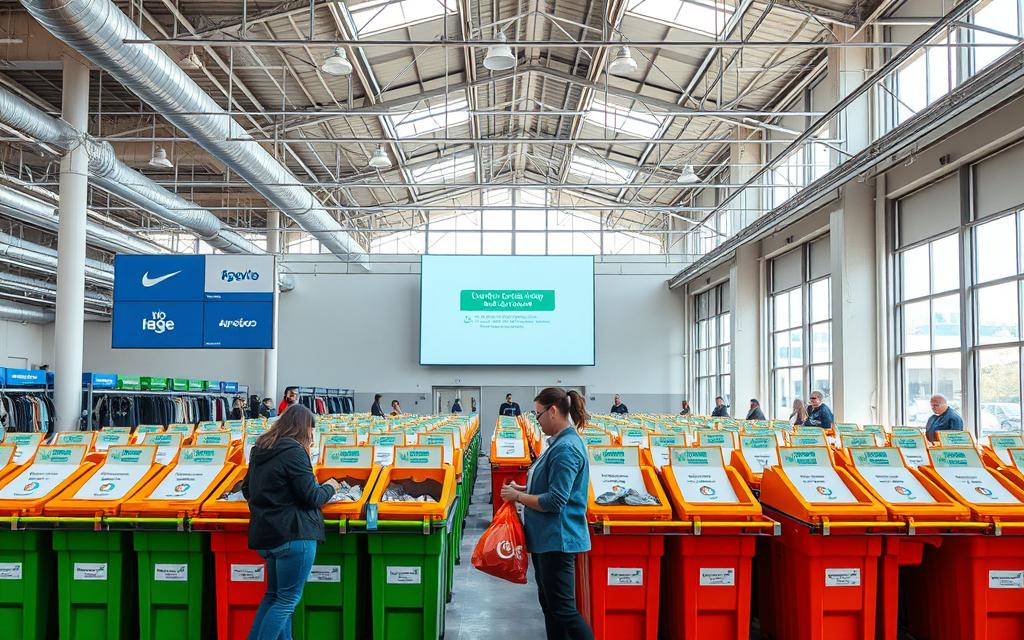
Exploring Take-Back Programs from Popular Brands
Many brands now offer take-back programs to encourage responsible disposal. Levi’s SecondHand program allows customers to return used denim for resale or recycling. Madewell provides a $20 trade-in credit for old jeans, which are then repurposed into housing insulation.
Marine Layer’s T-shirt recycling initiative, Third Source, transforms old shirts into new materials. These programs not only reduce waste but also incentivize consumers to participate in sustainable practices.
How Retailers Are Helping with Textile Recycling
Retailers are partnering with specialized organizations to enhance their recycling efforts. American Eagle collaborates with Supercircle to process returned items. Gap works with thredUP to resell gently used clothing, extending the life of these textiles.
Some brands offer in-store collection bins, like Zara, while others provide prepaid mailing labels, such as Eileen Fisher. H&M requires a minimum of 1lb of textiles for discount vouchers, ensuring significant contributions to their recycling quotas.
Innovative approaches are also emerging. Girlfriend Collective creates swimwear from recycled fishing nets, showcasing how creativity can drive sustainability. These efforts highlight the fashion industry’s commitment to reducing its environmental footprint.
Conclusion: Making a Difference Through Proper Clothing Recycling
Proper disposal of textiles is a powerful step toward a healthier earth. By following the 5-R hierarchy—Reduce, Reuse, Repair, Resell, and Recycle—you can significantly cut down on waste. For instance, diverting just 10lbs of clothing from the landfill reduces carbon emissions by 30lbs.
Initiatives like WRAP’s Love Your Clothes campaign encourage extended garment care, promoting sustainable fashion practices. Additionally, upcoming EU textile recycling mandates will push global brands to adopt greener policies, further protecting the environment.
Join the movement by taking the #NoTextileWaste pledge. Share your commitment on social media and inspire others to make a difference. Together, we can create a cleaner, greener future.
